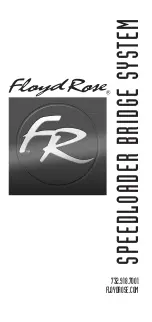
3
2
1
4
5
6
7
8
9
10
11
12
13
14
15
16
17
18
App
Index
2.1
System Configuration and Block Diagram
Product Features and System Configuration
GS820 Features
• The GS820 is a source measure unit that has two mutually isolated channels that can
be configured and operated independently.
• The source function (VS or IS) on each channel can be switched even while the output
is ON. In addition, the measurement function (VM or IM) can be switched at any time.
• The GS820 compares the measured value of each channel to a threshold value
(comparison operation function) and provides a terminal for delivering the comparison
result.
• By using the external I/O connector on the rear panel, 2-bit (765601/765611) or 16-bit
(765602/765612) digital output that can be driven from CH1 can be controlled in sync
with the source operation. In addition, the 2-bit (765601/765611) or 16-bit (765602/765612)
digital input can be output to a result file along with the measurement results.
• The I/O terminals for synchronous operation (SYNC IN/OUT) of multiple GS820s can
be connected in a daisy chain to allow synchronization of output control and trigger.
This increases the number of channels that can be controlled simultaneously. In
addition, a channel expansion function is available that allows synchronous operation
of up to 10 channels.
* Synchronous operation is not possible with a mixture of 18 V models (765601/765602) and
50 V (765611/765612) models.
• The GS820 has a built-in 12-MB non-volatile storage (GS820ROM) for storing various
settings and a 16-MB volatile storage (GS820RAM) for storing measurement results
and the like. If the GS820 is connected to your PC using USB, the two storage
memories becomes accessible from your PC as external storage memories. Because
settings and results are saved in a general text file or CSV file, you can use a text
editor, a general-purpose spreadsheet application, or the like to edit or draw graphs
on your PC.
In addition to the storage function, the USB can be used to perform command control
by way of the USB-TMC protocol. Furthermore, command control can be performed
by way of other communication interfaces such as GP-IB, RS-232, and Ethernet (VXI-11
protocol/7655 command socket). These interfaces allow multiple GS820s to be
controlled simultaneously using commands. The Ethernet communication also has an
FTP server function for the built-in storage and an HTTP server (Web server) function
that allows information to be viewed and the GS820 to be controlled from a browser.
Chapter 2
Explanation of Functions
2-1
IM 765601-01E
Explanation of Functions
















































